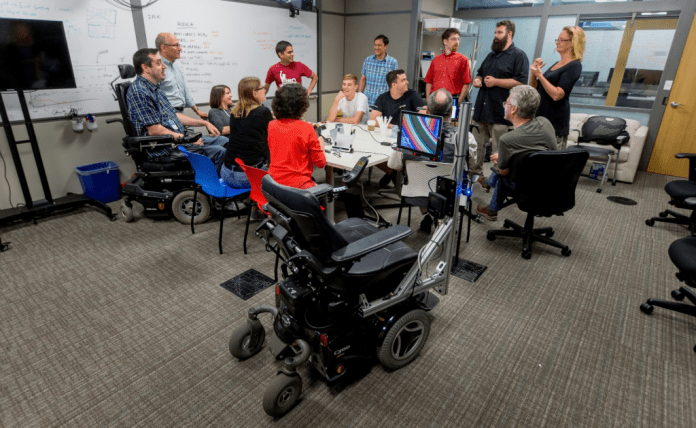Both are Ability Hacks, meaning they are solutions that help people with disabilities or limited accessibility. A new book charting these two projects and the success of Microsoft’s Hackathon is aptly titled “The Ability Hacks”. The book was written by Greg Shaw, who may be familiar to Microsoft aficionados. He is the co-author of Satya Nadella’s first book “Hit Refresh”. Microsoft is involved in the book, providing a foreword by Corporate Vice President Peter Lee and an afterword by Lay-Flurrie. Eye Gaze was a previous Hackathon (2014) winner and would later become Windows 10 Eye Control. One of the challenges posed in the event came from former NFL player, Steve Gleason.
— Jenny Lay-Flurrie (@jennylayfluffy) July 20, 2018 Now a sufferer of ALS, Gleason challenged researchers to find a way for him to use software, despite his inability to move or speak. The Eye Gaze Wheelchair was the result, which gave Gleason the ability to move a wheelchair around by looking at points on a Surface device. As for Learning Tools, it brings various techniques that help people read more effectively. Microsoft points out that Learning Tools comes with the following abilities:
Read Aloud—Reads text aloud with simultaneous highlighting that improves decoding, fluency and comprehension while sustaining the reader’s focus and attention. Spacing—Optimizes font spacing in a narrow column view to improve reading fluency for users who suffer from visual crowding issues. Syllables—Shows the breaks between syllables to enhance word recognition and decoding. Parts of Speech*—Supports writing instruction and grammar comprehension by identifying verbs, nouns and adjectives.
Microsoft brought Learning Tools to Office 365 in October, 2016. The capability was originally debuted last summer for OneNote. It later came to Word Online and OneNote Online.
Hackathon Success
Looking back on those success and looking ahead to this week’s Hackathon, Lay-Flurrie told GeekWire they have defined her work: “It still is probably the best week of my career here. It’s the most fun,” Lay-Flurrie says. “I’m sitting here right now, knowing that I’m walking in [Monday] with at least 130 hacks for the ability hack, so probably 800-1,000 folks working on disability. I think it’s just been a brilliant focus on humans, in so many ways. It just allows folks to wallow in problems or solutions or how to weave technologies together that are going to have a real human impact, and I think that that’s what grounds people to it.”




